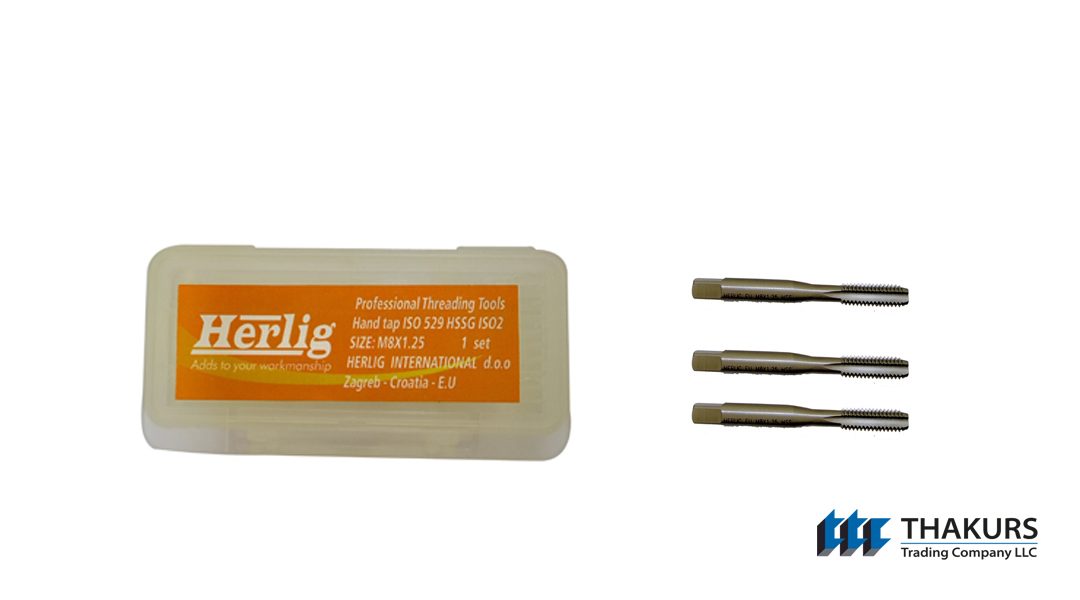
Hand taps are cutting tools used to create internal threads in a workpiece. They are commonly used in metalworking, woodworking, and other industrial applications to create threaded holes in materials such as steel, aluminum, and plastic.
Hand taps come in various sizes, shapes, and materials to suit different applications. They typically consist of a shank with a square or hexagonal end for use with a tap wrench, and a threaded section with flutes that guide the tap through the material being threaded.
Hand taps are available in different types, including:
- Straight flute tap: A straight flute tap has flutes that run straight up and down the length of the tap. It is commonly used for general-purpose tapping in materials such as aluminum, brass, and low-carbon steel.
- Spiral flute tap: A spiral flute tap has flutes that twist around the length of the tap. It is commonly used for tapping deep holes and for tapping in materials that produce long chips, such as stainless steel and high-carbon steel.
- Interrupted thread tap: An interrupted thread tap has a series of grooves or notches cut into the threads to break up the chips and prevent them from clogging the tap. It is commonly used for tapping in materials such as cast iron, bronze, and brass.
Hand taps are available in a range of sizes, with the most common sizes ranging from #0 to 1 inch in diameter. The size of a hand tap is specified by its thread pitch, which is the distance between the threads, and its thread form, which is the shape of the threads.
When using hand taps, it is important to use the correct size and type of tap for the material being threaded, and to apply the appropriate amount of pressure to avoid breaking the tap. It is also important to use cutting fluid to lubricate the tap and reduce friction and heat buildup.
Hand taps come in a wide range of sizes, and the size chart for hand taps typically includes the following specifications:
- Thread type: Hand taps are available in various thread types, including coarse, fine, and extra-fine threads.
- Thread size: The thread size is specified by the diameter of the tap, measured in either inches or millimeters.
- Pitch: The pitch is the distance between the threads, measured in either threads per inch (TPI) or threads per millimeter (TPM).
Here is a general size chart for some common hand tap sizes and thread types:
- 0-80 TPI: Used for very fine threading in small parts and components.
- #4-40 TPI: Commonly used for thread tapping in electronic components, plastics, and thin metal sheets.
- #8-32 TPI: Suitable for use in light-duty applications such as furniture and cabinetry.
- 1/4″-20 TPI: Used in general-purpose applications, such as automotive and machinery.
- 3/8″-16 TPI: Used for threading bolts and nuts in automotive and machinery applications.
- 1/2″-13 TPI: Suitable for use in heavy-duty applications such as construction and structural steelwork.
It is important to choose the appropriate size and type of hand tap for the material being threaded to ensure the best results. Proper tapping techniques, such as using lubrication, applying the correct amount of pressure, and backing off the tap periodically to clear chips, are also essential for achieving accurate and clean threads.
